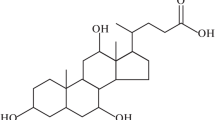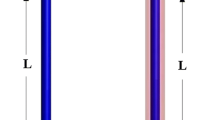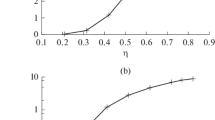Abstract
Percolation of individual single walled carbon nanotubes (SWCNTs) and of SWCNT bundles dispersed in a non-interacting polymeric matrix has been analyzed computationally using an analytical model and a numerical simulation method. While the analytical model used is strictly valid only in the limit of an infinite length-to-diameter aspect ratio of the dispersed phase, good agreement is found between its predictions and the ones obtained using a computationally-intensive numerical method for the aspect ratios as small as 350. Since the aspect ratio of the individual SWCNTs is on the order of 1,000–10,000, this finding suggests that the analytical model can be used to study SWCNT percolation phenomena.
An electrical network model is also applied to the percolating and near-percolating SWCNT clusters in order to compute the dc electrical conductivity of a CP2 polyimide + SWCNT composite material. A reasonably good agreement is obtained between the computational and the experimental results with respect to both the magnitude of the electrical conductivity and to its behavior in the vicinity of the percolation threshold.
Similar content being viewed by others
References
S. F. Parker, K. P. Williams, P. Meehan, M. A. Adams and J. S. Tomkinson, Appl. Spectr. 48 (1994) 669.
S. Iijima, Nature 354 (1991) 56.
Z. Ounaies, C. Park, K. E. Wise, E. J. Siochi and J. S. Harrison, Comp. Sci. Tech. 63 (2003) 1637.
Balberg, N. Binenbaum and N. Wagner, Phys. Rev. Lett. 52 (1984) 1465.
I. Balberg, C. H. Anderson, S. Alexander and N. Wagner, Phys. Rev. B 30 (1984) 3933.
A. L. R. Bug, S. A. Safran and I. Webman, Phys. Rev. Lett. 54 (1985) 1412.
Idem., Phys. Rev. B 33 (1986) 4716.
S. H. Munson-McGee, ibid. 43 (1991) 3331.
A. Celzard, E. McRae, C. Deleuze, M. Dufort, G. Furdin and J. F. Mareche, ibid. 53 (1996) 6209.
Z. Neda, R. Florian and Y. Brechet, ibid. E 59 (1999) 3717.
L. Onsager, Ann. NY Acad. Sci. 51 (1949) 627.
A. M. Somoza, C. Sagui and C. Roland, Phys. Rev. B 63 (2001) 81403.
P. Bjerager, J. Engrg. Mech. 114 (1987) 1.
B. Allen, Adv. Chem. Phys. 63 (2001) 81403.
M. E. J. Newman and R. M. Ziff, Phys. Rev. E 86 (1993) 1.
SPICE 3, http://www.eecs.berkeley.edu/.
M. Sahimi, “Applications of Percolation Theory” (Taylor and Francis, London 1994).
Author information
Authors and Affiliations
Rights and permissions
About this article
Cite this article
Grujicic, M., Cao, G. & Roy, W.N. A computational analysis of the percolation threshold and the electrical conductivity of carbon nanotubes filled polymeric materials. Journal of Materials Science 39, 4441–4449 (2004). https://doi.org/10.1023/B:JMSC.0000034136.11779.96
Issue Date:
DOI: https://doi.org/10.1023/B:JMSC.0000034136.11779.96




